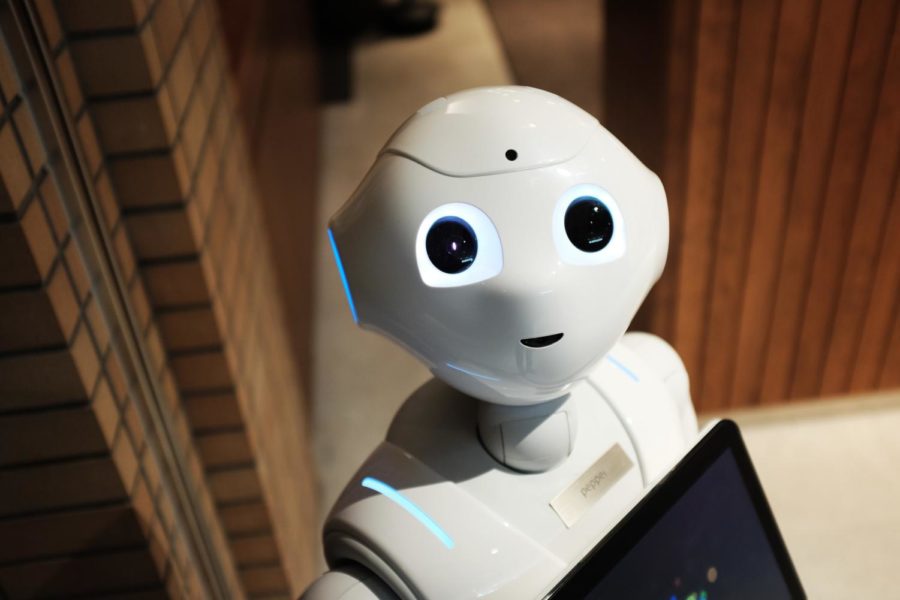The Rise of Automation Within the Workforce and What to Do About It
It is not automation itself that workers should be wary of. Rather, the nature of capitalism itself is the problem.
The introduction of advanced automation into the workforce could erode labor power, ultimately leading to stagnant wages and unemployment for the working class.
Among workers globally, the mention of automation prompts fearful images of a robot apocalypse, in which humans are held to the whims of Terminator-like machines.
Is this fear irrational? The answer is more complex than a simple yes or no.
The rise of automation within the workforce over the past years has created a looming threat toward workers, who fear their jobs might be replaced by a robot that is more cost-effective and productive. The onset of the COVID-19 pandemic has transformed this fear into reality at an alarming rate: the United States lost around 40 million jobs at the peak of the pandemic due to economic recession, and some economists predict that 40% of these jobs are now lost to automation for good.
The rapid replacement of human labor with automation solves the novel problem of social distancing. A dense human workforce could encourage the spread of the COVID-19 virus, while replacement with machines permits social distancing and maintains low operating costs for employers.
A study by MIT reveals that robots may replace as many as two million more people in the manufacturing sector alone by 2025. These numbers are staggering — and those who are most affected tend to be low-income and people of color.
Minimum wage workers often have little to no social mobility or financial security that would enable them to pursue a career towards a more “skilled” profession that requires a certain degree of education or training. In the past, the United States has responded to automation by increasing public access to education. However, today it spends only 0.1% of its GDP in order to help workers transition from job to job. U.S. investments in the education of the working class have dwindled over the years, increasing the reservoir of unemployed workers. As we transition to a highly advanced technologically-based economy, the government will be required to train over 11.5 million people to prepare them to enter the workforce with smart machines and advanced automation. Lack of opportunities for low-income workers to improve their skill set will ultimately lead to their isolation from the workforce.
Fear of automation stems from the erosion of labor power. As technology begins to surpass workers in productivity, workers lose the monopoly they have on their labor. Researchers at MIT have found that one additional robot per 1,000 people led to a reduction in the national employment-population ratio by 0.2%. Each robot replaced about 3.3 workers nationally, on average, and lowered wages by 0.4%. Prior to the Information Age, workers were able to form diverse coalitions and use their labor as a bargaining chip for higher wages, improved conditions, and fewer working hours. The fear of losing profit from a mass strike of workers encouraged capitalists to negotiate with their workers, and in the process leveled out the playing field.
Now, however, a mass strike of workers is less of a threat to the modern capitalist. The labor carried out by the workers could just as easily be done by a machine, which will not demand acceptable wages or working conditions. The power within the workforce is skewed towards the capitalist, who is no longer kept from the pursuit of maximum profit at the expense of the working class.
Despite these unsettling statistics, there is hope for workers who may fear the incoming swarms of machines prepared to displace their livelihoods: if utilized correctly, machines could decrease the number of hours in a workweek, and machines themselves could undertake menial or dangerous tasks, instead of the workers themselves.
Why should we learn to disregard our fear of automation? The answer lies in the numbers: a future tech-driven economy can potentially create 97 million jobs. AI, robotics, and other forms of smart automation have the potential to bring great economic benefits and may contribute up to $15 trillion to global GDP by 2030.
However, as we exist under capitalism, there is a perpetual antagonistic relationship between automation and the American workforce; as long as workers do not democratically control the means of production, advancements in technology work against them in the workplace.
The rewards of an increasingly automated society will only be reaped under a socialist economy, an economy in which the workers own the fruits of their labor.
As we exist under capitalism, there is a perpetual antagonistic relationship between automation and the American workforce; as long as workers do not democratically control the means of production, advancements in technology work against them in the workplace.
Karishma Ramkarran is an Editor-in-Chief for ‘The Observatory’ yearbook and a Staff Reporter for 'The Science Survey' newspaper. She appreciates journalistic...











